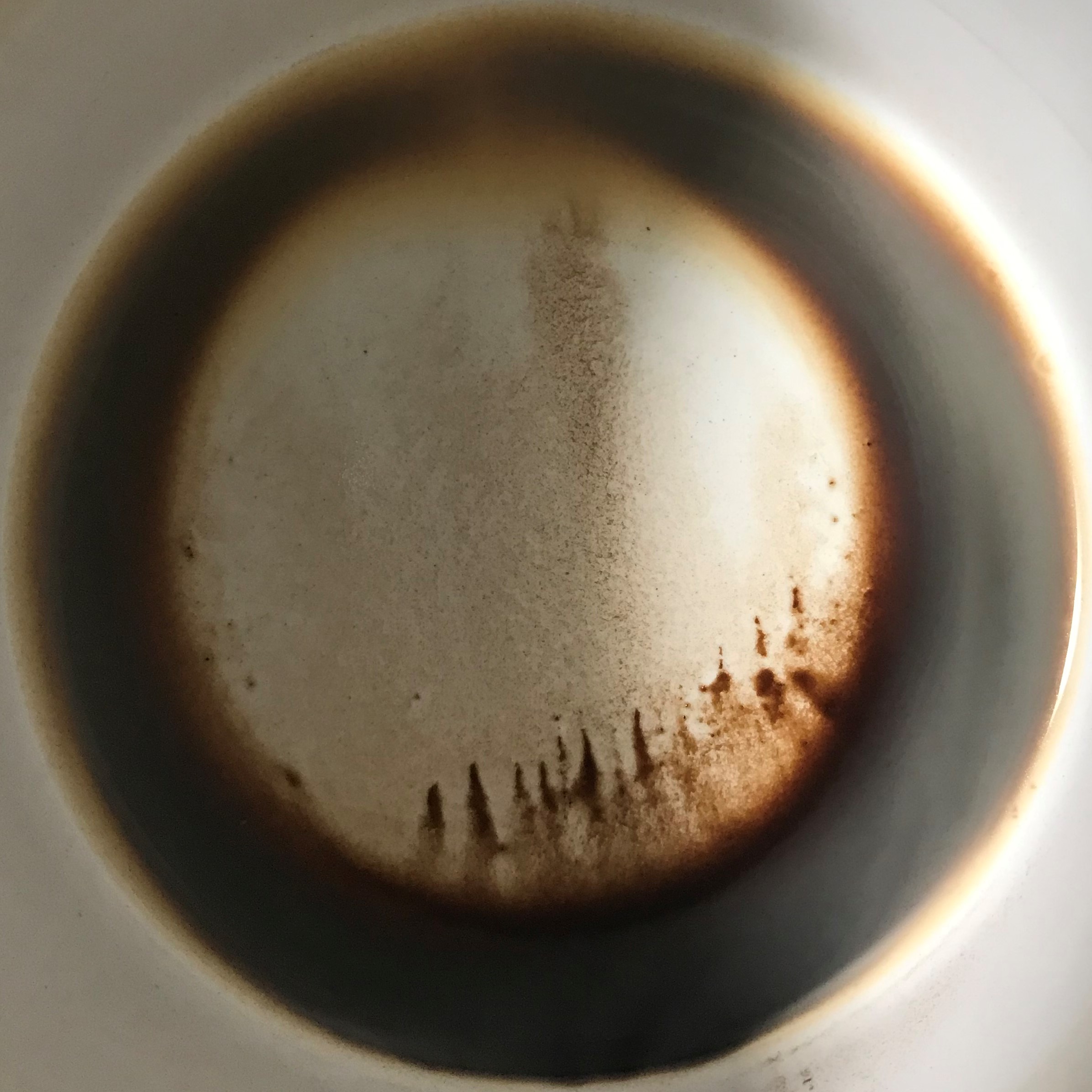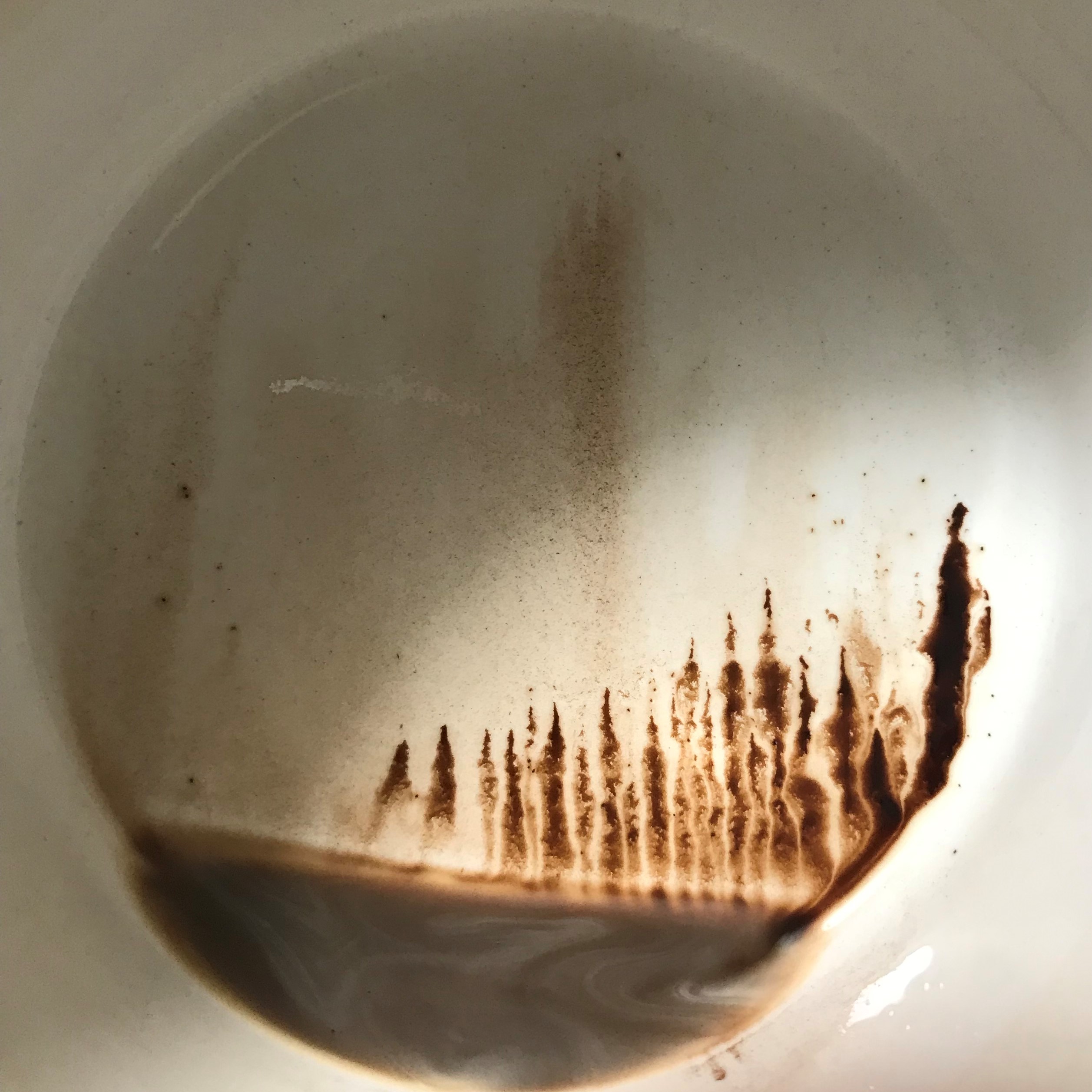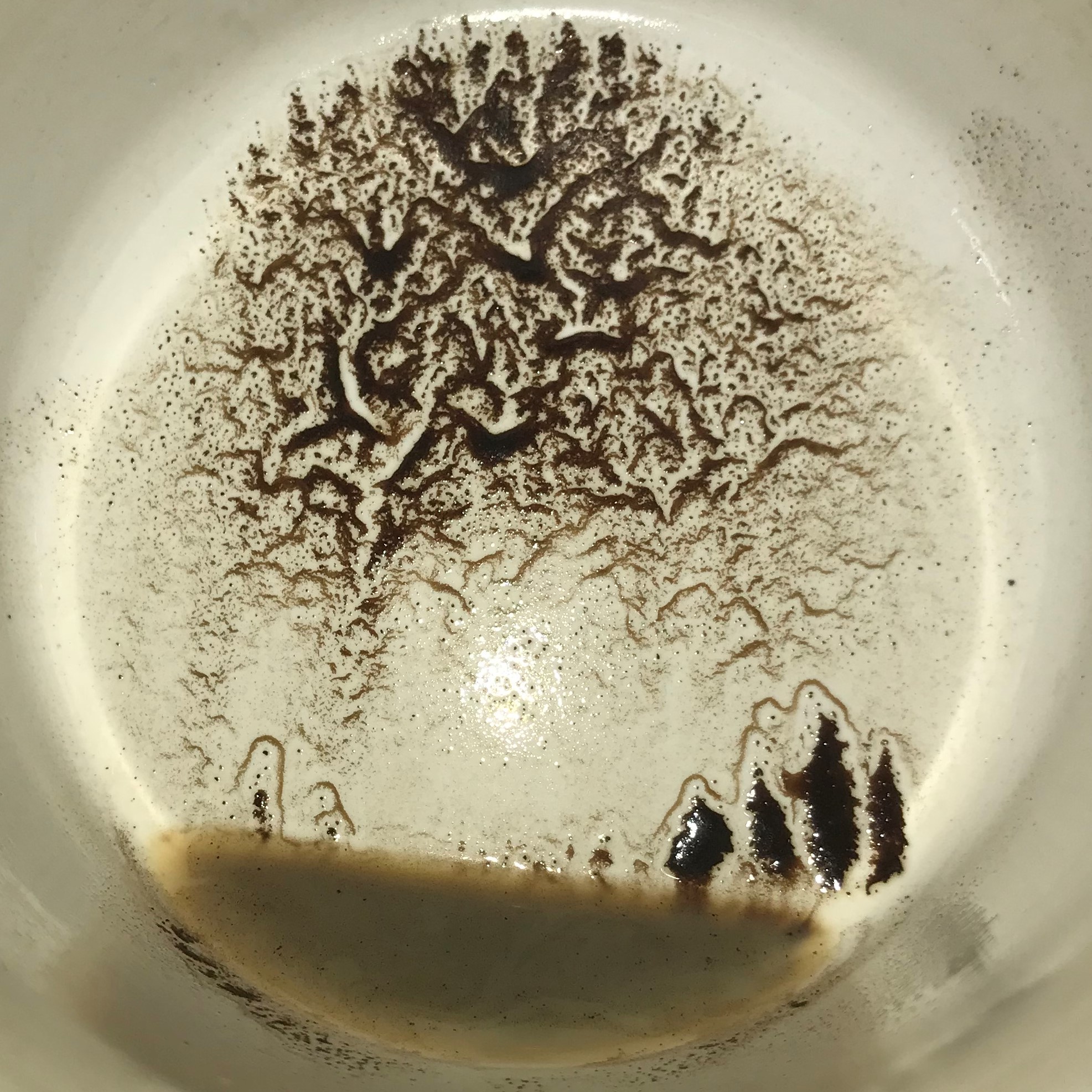A disclaimer about the photos in this post: I took them in 2006 and had to size down the files. This messes with the watermarks a bit, but they are nonetheless intact and witness to my adventures in England. Enjoy.
Ten years ago, I boarded a plane to leave for England for the first time. I was in Oxford for an intense semester, studying at the Centre for Medieval and Renaissance Studies. It was life-changing.
I was twenty-one, perpetually anxious but eager to see a different part of the world. Not everybody gets that chance. So my time in Oxford was remarkably special: a testament to the generosity of my late grandmother and my parents. I made life-long friends with my fellow American students, learned the city streets by heart, and visited castles, cathedrals and ruins, walked around Stonehenge, hiked a moor, and felt alive.

Certainly, when one takes her first solo journey into a different part of the world, she’s bound to change a little; the world doesn’t seem so small anymore. And things that once seemed to be daunting and scary were now distinctly possible.
My most precious souvenir wasn’t trinkets or books (although I had many of those). It wasn’t even the thousands of photographs taken by a fish-out-of-water student drinking up every bit of scenery. My greatest souvenir was a novel – a novel I began writing in 2007, after I’d come home. I never finished it; I had not yet grasped the concept of finishing a draft and going back to edit – I simply kept writing and imagining and twisting it into new shapes. Nevertheless, it remains with me as a sort of memorialization of my experiences, a time capsule of a writer in her early moments.
It was called Adrian Saint, set in the Fall of 2006 partly in Oxford and partly in North Yorkshire. The characters were historians. One was Robin Reed an awkward American, who’d fallen in love with Oxford and history. Another was Mary Piper Cressy who was exceedingly anxious, obsessive-compulsive and almost continually in the throes of self-doubt. I felt that my characters were there to live history, would be skin-to-skin with the visceral mystery of the human experience. That was something I’d tasted walking the cobblestones at night, coming home from writing essays in the Radcliffe Camera or taking a long walk through Christ Church Meadow.

Adrian Saint promised to be a deliciously bizarre tale. The historians were there to research a scary legend about a fifteenth-century monk (Adrian) and dark happenings in Yorkshire. Robin Reed had bizarre dreams and a tendency to walk through time while sleep-walking. Mary Piper was intrigued by the strange writings from a medieval noblewoman. Mary Piper and Robin’s boss, Roger Barrow, kept a sharp watch out for demons and ghosts on the moor and was particularly haunted by the death of his wife. There were séances, hauntings and demon possession. There were hints of Richard III and the War of the Roses. It was a rich amalgam of everything I was pondering and curious about as a student and a young writer.
Many first novels are semi-biographical, and that is true reading through the hundreds of pages I churned out in my post-Oxford years. Writing Adrian Saint was a way retain that experience and apply that knew knowledge in writing.
I conceived of the idea on a field trip to Glastonbury Abbey, standing amidst the ruins. It began as a sort of angry rant against Henry VIII for destroying this beautiful place. I wanted to hear from the monks. And Brother Adrian was born.

The Significance of Place: Oxford
Oxford itself was a character to me. You have to understand that I grew up in Omaha, Nebraska. Although I’d visited bigger and older cities in the U.S., I’d never lived anywhere older than 150 years. Oxford and London are both pre-Christian old. And Oxford is filled to the brim with medieval architecture. Like the Nokia-turned-Pret coffee shop. Throughout Adrian my characters might take a route from a certain flat at Osney Lane (near the site of the old abbey) and walk all the way to the Bodleian, passed Oxford Castle, up High Street or Cornmarket. It was my route. I was spellbound by Oxford, and every little detail was significant to me; therefore, it would significant to my characters.
It was the first time I’d gotten to know a place so well that I’d know it by heart. This is one reason why walking a city is better than driving. And with Oxford, you had a mythical component. Just by walking through Christ Church Meadow, following the River Cherwell, I was reminded of the Anglo-Saxon abbess Saint Friðeswiðe who travelled up the Cherwell to escape a suitor – a thousand years before.

Then there are the everyday details, I was fascinated with:
I learned about Britain by listening to one of our CMRS tutors wax poetic about the art form of drinking local beer. He told our class en route to Warwick Castle that we were not tourists – we were students, therefore we should pronounce Warwick properly, as War-ick. There were similar lessons about Worchester (Wuh-ster) and Magdalen (Maud-lin).

I learned about Britain through the handling of their coinage and marveling at the idea of a £2 coin, and how pretty it all was. England began to make more sense to me than America.
There was food, of course. I started drinking tea during my time in Oxford, letting it steep for a proper amount of time, and using cubes of turbinado sugar in my coffee. I learned that an after-church meal for a large group is far more likely to feature curry or chicken korma than a taco bar. More than once, we’d come back to our flat to enjoy a steak and kidney pie we’d picked up at the Covered Market or stop for a pasty from a vendor. For my twenty-first birthday, roommates Michelle, Susie and Megan treated me to an exquisite cake made of fondant and jam and topped with a marzipan witch (it being October). We puzzled over the gritty consistency of Sainsbury’s peanut butter and how the diet Coke cans read “sugar free” and nonetheless tasted slightly different than American diet coke.

These were but little things that didn’t make it into any novel, but that enriched my experience.
The Significance of Place, Part 2: Making up stuff.

Castles are great. But I longed to see a moor. I loved Brontean depictions of moors and grew up with images from The Secret Garden, The Hound of the Baskervilles and other tales. It seemed a very British thing, a far, mysterious cry from the drier, flatter prairies of Nebraska. So roommate Susie and I took a train to Skipton, north of Leeds.
Why Skipton? Well, it had a castle, a gorgeous one at that with roots in the 1688 revolution, a moor, and a nice bed and breakfast, surrounded on all sides by sheep. A moor is basically wet hills, wetlands, etc. No trees. We visited Skipton Castle and walked the moor on November 11th, 2006, a rainy, misty day which meant that our hike was atmospheric, wet and bone-cold. The thing about a moor is that it is a relatively empty landscape, waiting to be filled with ideas – a veritable tabula rasa upon which one can write about peace or legend, discover barrow mounds or watch out for devil-dogs. It was only natural that by the time I came to write Adrian, the moor shined out as brightly in my memory as Oxford did, and became the backdrop of mysterious happenings.

I thought, what if time is like the weather, moving in storm-clouds across those moorlands? What if the divide between 2006 and 1483 was so thin, you’d not notice if you crossed to the other side? What if you could hear church bells ringing from distant era?
Story-teller Versus Historian: Robin and Mary Piper
Adrian was telling me something less obvious in the months and years following my journey to England: I was a story-teller, and that was okay. When I graduated in 2008, it was with a degree in English and History. I always put it that way, with English first, because the History part makes me uncomfortable. As early as high school, being told that I had to write according the MLA or the Chicago style and by a set of strict rules felt like imprisonment. But I ploughed through school, anyway, writing those papers even if the mode of that writing was a downright struggle.
At Oxford, we wrote an essay a week for each tutorial and seminar, which meant I was writing three essays a week, sometimes staying up all night to get them done. It was hard work, indeed, but worth it. I was at Oxford, after all, and it was not supposed to be easy.

I was nervous about having the wrong opinions, not being careful enough, not digging deep enough, and burning myself out over things that weren’t terribly special to me. I was told more than once by certain professors that I needed to be less wordy, less personal, less speculative. I found that deeply upsetting.
I had a hunger to create that overpowered my need to know and study. I wanted to paint pictures, as well as draw new conclusions. My mode of making an argument had more to do with my gut and my emotions than the facts; and I could not simply separate them. With Adrian, I was trying to make the best of both worlds – nestling plausible history inside an armor of fiction, to make history touchable, personal and beautiful.
One Adrian Saint character, Mary Piper Cressy, is a historian who writes fiction and is frowned upon by the other scholars because she’s more fanciful than is deemed acceptable. This was me perceiving an opposition to what I knew deep down: “give me stories to tell. That’s what I want. Here’s a legitimate way to do it.” Writers, I’d been told since the six-grade when I started writing like a fiend, don’t earn very much money. “Don’t do it,” I was told. Well, I couldn’t stop what was a part of me. History for me was the starting point, not the end in itself.
Robin, as the American, was clumsy and whimsical by nature (photographer and pianist in his off hours), and straddling both worlds. He wanted out from under the heel of criticism, to forge his own career, to make up his own mind about what being an American means in England. He was named for my Reed ancestors, patriots in the Revolutionary War. In England, as an Oxford scholar, he was forming a new identity for himself and taking in this new back drop with earnest eyes. He was an outsider and that made him more compassionate, and an obvious match, to Mary Piper.
Mary Piper had a desire to understand Lady Amy, a young mad noblewoman integral to the Adrian legend. She poured over strange writings of Lady Amy’s like a kindred spirit. On the other side of that mirror, I was writing Lady Amy’s odd poetry and Mary Piper’s vision of them, feeling a new sort of power. It is not enough to read what was written, to make conjectures about the past, but to interact with it. Mary Piper feels Amy calling her, just as Robin, sleepwalking and having visions, is drawn in by Brother Adrian across the moor.
So the message in Adrian was about letting history speak was my own inward plea, my own way of looking at the world and trying to justify the creative side of my life, to show that it had purpose and legitimacy. I also learned early on that I was not cut out to be a teacher. And I was okay with that.
Details, Details
I photographed many a window, stained-glass, empty-paned and otherwise, on my journey. They are the first features of a place to catch my eye. Are they arched or tear-dropped? Mullioned or balconied? These questions were important questions as I learned to pay attention to detail.

In this collage are many windows. Left column: St. Peter’s dormitory, on the landing; a small window at Berkeley Castle; a detail of a pane in Winchester’s Great Hall, honoring Hardicanute, or Harthacanute, an early king of England; (bottom) an empty window of the former chapel at Skipton Castle; a mullioned pane at Christ Church Cathedral, Oxford.
Middle column: (top) Winchester Great Hall pane honoring Queen Elizabeth; a full view of a Great Hall window, Hardecanute visible; another balconied window at Berkeley.
Right column: the Altkorn Room window at St. Peter’s, my first room at Oxford; inside Carfax Tower, Cornmarket St, Oxford; an arrow-hole at Skipton Castle; view from the panes at Christ Church Cathedral.
Finish the Novel
Adrian taught me that you have to FINISH THE DANG NOVEL. Finish a draft, even if it stinks, edit, revise, new draft, repeat. Instead of doing this with Adrian, I fell into the vortex of writing and editing and writing and editing and constantly changing it with no end game in sight. So it died a slow and painful death.
I used to think that I had to get a chapter exactly right before I could move on. Doing so meant that I didn’t have to make decisions, get the characters to the next point or worry about story arcs, to the unravelling of the novel itself. But I wasn’t thinking about craft back then. I didn’t realize that it was telling the story of my own fears and perfectionisms. Perhaps there was also, deep inside, the knowledge that if I finished a draft, the story would be over and cease to be ongoing. It would be a sealed capsule.
Periodically, I think about how I might rewrite Adrian Saint and actually finish it. I want to set it in 1936, World War II just on the horizon. I imagine Robin Reed with a bicycle, unwisely pedaling over the moors. I see Mary Piper dealing with sexism in her field and her own unrealized dreams. I see the Adrian legend coming not as a revelation about the past, but a warning about the dark, not-so-distant future.
Someday, I will return to finish what I started, and it will be a new, yet familiar place. It will have grown since 2006. Then again, so have I.






Love hearing this journey!
What a wonderful essay, Jillian. And what an incredible opportunity you had to immerse yourself in England and its rich, beautiful landscape and history. I wish I could live there for a few months to truly experience it. My trips there have always been far too short.
Adrian Saint sounds like a novel I would read. 🙂